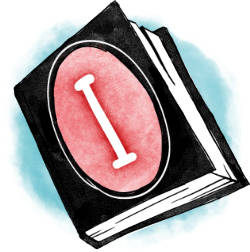Pure Balance
Introduction
Balance isn’t a fixed destination—it’s a dynamic process. It’s not about maintaining perfect equilibrium at all times but about developing the awareness to shift, adapt, and recalibrate as life demands. Often, imbalance isn’t the problem—it’s our perspective on it.

Finding Balance: A Shift in Perspective
Like a song with crescendos and decrescendos, your life moves through moments of vibrancy and stillness, clarity and uncertainty, abundance and pause.
Rather than forcing stability in an ever-changing world, we can learn to notice balance—and move with the natural rhythms of life.
You’ll begin to see how your mindset shifts—between richness and lack, confidence and doubt—not as flaws, but as part of the full human spectrum.
We are all these things.
By embracing the darkness as well as the light, we begin to live more honestly, more fully, more in rhythm.
This guided journal offers a framework for doing just that. Through different perspectives on balance, you’ll gain insight into how your habits, energy, priorities, and mindset work together to create a lifestyle that feels more rhythmic and sustainable.
Each section explores a new way of looking at balance, combining readings, videos, journal prompts, inspiration, and actions to apply these concepts in a way that makes sense for you. The goal isn’t to follow a rigid structure but to find clarity in how you distribute your time and energy, allowing balance to emerge organically.
1. Wholeness: The foundation of all things. Before we can talk about contrast, we need to understand wholeness. Everything in life is interconnected—our thoughts, our actions, the world around us. When we recognize this, we stop treating balance as a problem to solve and start seeing it as a rhythm to navigate.
2. Perspective: Where contrast gives us clarity. Light and dark, structure and freedom, effort and ease—these forces aren’t in conflict; they work together. Strength isn’t just about pushing through; it’s also about knowing when to pause. By understanding both sides, we gain the ability to move between them intentionally, rather than reacting unconsciously.
3. The Power of Three: Exploring the balance between mind, body, and spirit. These elements don’t function in isolation; they influence each other constantly. Our physical state affects our mental clarity. Our emotional well-being impacts our decision-making. We also look at the three brains—the head, the heart, and the gut—and how integrating them leads to sharper intuition and better choices.
4. Natural Cycles: Balance isn’t just internal—it’s shaped by external forces. The seasons shift, energy fluctuates, and our needs change with time. Aligning with these natural rhythms reduces friction and creates flow.
5. Inner Priorities: Exploring Maslow’s hierarchy of needs. While it provides a useful structure, balance isn’t always about following a set order—it’s about knowing what you need most right now. This section encourages reflection on what you need and where your energy is going.
6. Rooted Awareness: How our six senses and biannual rhythms ground us in reality. Learning how to refine and direct sensory input helps us stay present, reduce stress, and increase clarity.
7. Energy & Structure: Exploring the chakras and how energetic cycles mirror the structure of our days and weeks. Just as our body has centers of balance, our routines benefit from intentional structure. This understanding helps distribute focus in a way that supports both efficiency and well-being.
8. Dimensions of Wellness: We integrate everything through the 8 Dimensions of Wellness—a practical model for holistic balance. Emotional, physical, social, environmental, intellectual, occupational, spiritual, and financial well-being are all connected. This section helps you assess where your energy is flowing and where small shifts could create significant change.
Why Does This Matter?
Imbalance isn’t always about doing too much or too little—it’s about whether your energy is aligned with your true needs.
We often treat balance like a destination. But it’s more like a dance.
This guide won’t prescribe a rigid routine—it will help you observe, reflect, and shift. It gives you the tools to move withbalance, rather than chase it.
And when you start seeing balance as fluid, not fixed—you begin creating a lifestyle that is not only more sustainable, but more fulfilling.




